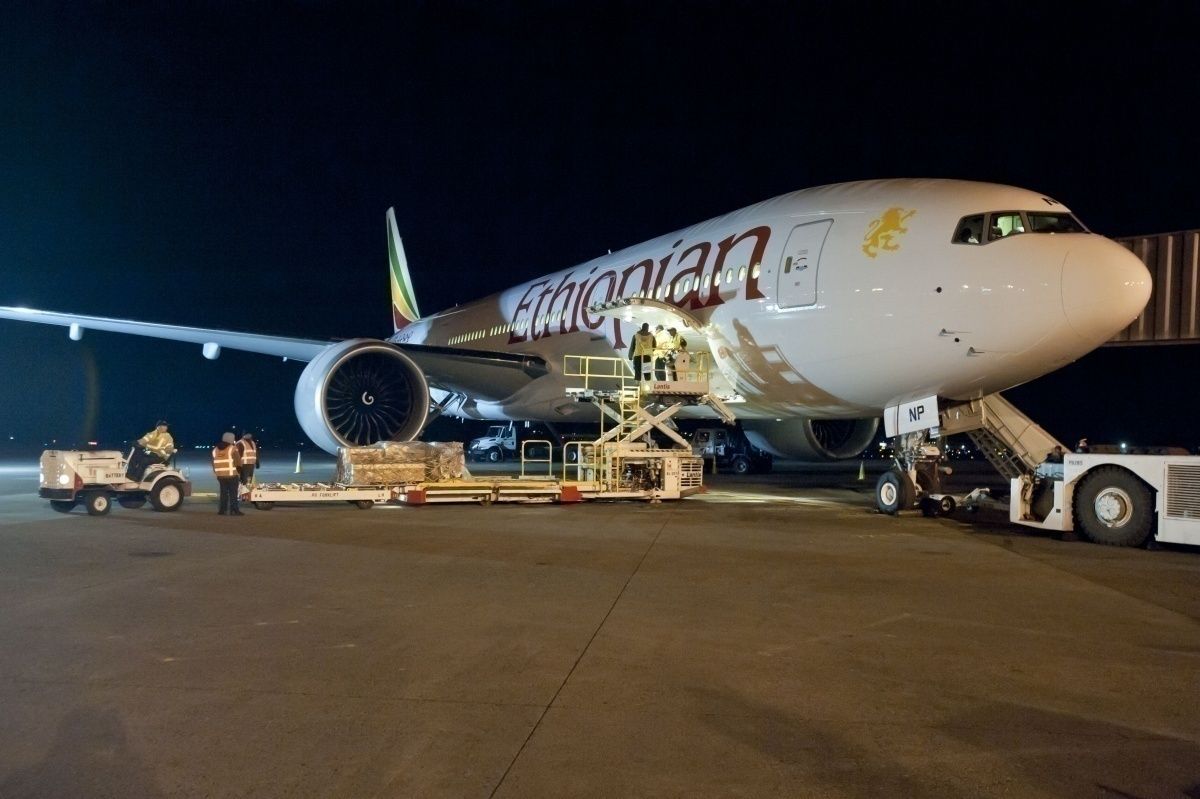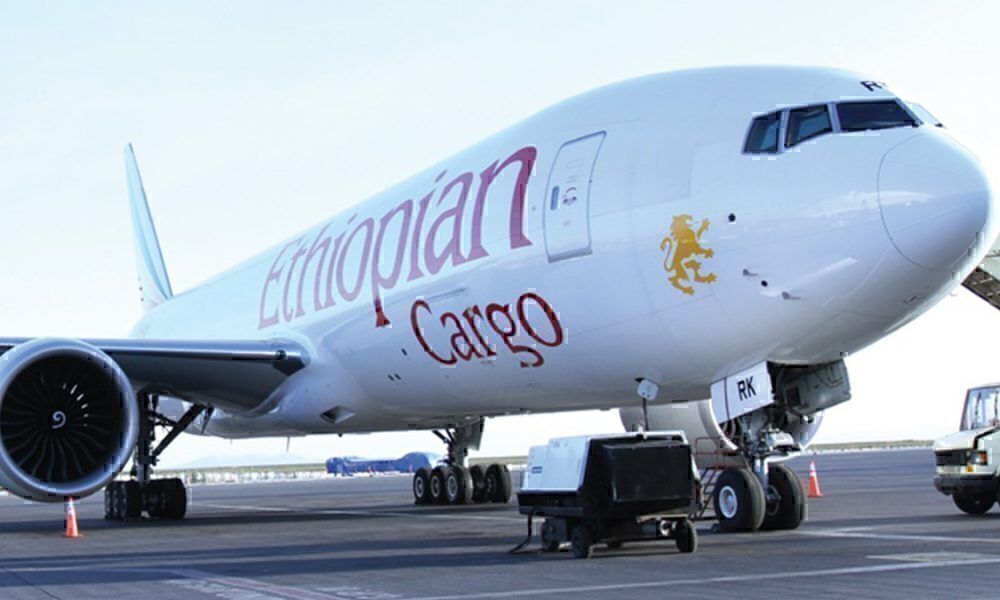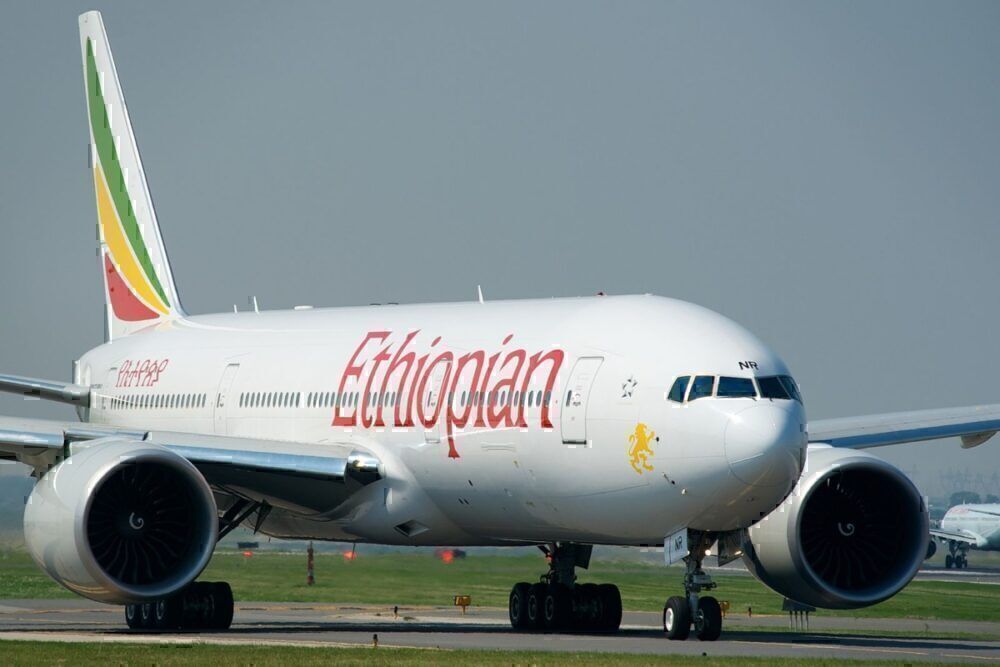Ethiopian was one of the first airlines in the world to embrace the opportunity of moving cargo in place of passengers during the COVID crisis. At one point, 25 passenger aircraft had their seats taken out in order to maximize cargo capacity. Acting Chief Commercial Officer at Ethiopian, Esayas WoldMariam, told Simple Flying that now, demand for passenger services is beginning to ramp up to the point that airline is starting to put some seats back on these aircraft.
Ethiopian embraced the preighter early on
Before COVID, Ethiopian Cargo worked with a dedicated fleet of 10 777F and two 737-800s. However, as demand for cargo services soared and the bottom dropped out of the passenger market, the airline moved to increase its capacity to shift goods. Acting Chief Commercial Officer at Ethiopian, Esayas WoldMariam, told Simple Flying about the conversions, saying,
“The conversion of passenger aircraft into freighters – as we call them preighters – it was necessary because shipments of Personal Protective Equipment and medicines and supplies in connection with COVID-19 were highly in demand. Many of the passenger airliners, particularly the widebody and long-range aircraft were grounded. Air spaces had been closed and flying of passengers had stopped.
“So, this combination of a lack of daily hold capacities, which constituted 45% of the total cargo conveyance on the planet was massively reduced. When that [capacity] was reduced, and the need for conveyance of PPE was surging, then we had to embark. Necessity pushed us into converting 25 aircraft plus we used our existing cargo aircraft, 12 of them, so altogether we were working with about 37 of them.”
Ethiopian’s cargo conversions weren’t just change of use. While aircraft like the 777 and Dreamliner have large capacity belly holds, Ethiopian had the foresight to undertake a full pivot to cargo. Ato Esayas explained,
“The conversions constituted removing passenger seats and using both above and below the wing capacity of the aircraft for cargo purposes.”
Stay informed: Sign up for our daily aviation news digest.
Now, seats are going back in
Having successfully achieved six months of survival primarily through cargo operations and repatriation flights, Ethiopian is now looking ahead. Small glimmers of positivity are beginning to shine through, and Ethiopian is seeing the need to bring some of these preighters back into passenger service. Esayas told us,
“There are a few of them which we are now partly converting back to passenger configuration. Because more and more air spaces and countries are opening their borders for passenger arrival. Also, our hub and spoke network is getting more and more dense. So, we are bringing some of them back to passenger service.”
Hearing that widebodies are being returned to passenger service due to demand is incredibly reassuring right now. Many widebody fleets have been mothballed long-term, as airline executives predict several years of low demand for international traffic. But for Ethiopian, its early focus on cargo has meant that it doesn’t need a huge passenger load factor to make these long-haul flights profitable. Ato Esayas explained,
“With both passenger and cargo combined, we have resumed about 40% of our pre-COVID operations. That that may not be with dense passenger load factors, but the payload capacity is being put into a very good use for conveyance of cargo and whatever number of passengers we have above the wing. So, the combined economics would be still palatable for us.”
For Ethiopian Airlines, this flexibility and agility in its operations have allowed it to weather the COVID crisis with no bailout. Keeping this open-minded approach to its operations will undoubtedly see it emerging an even stronger global player.



